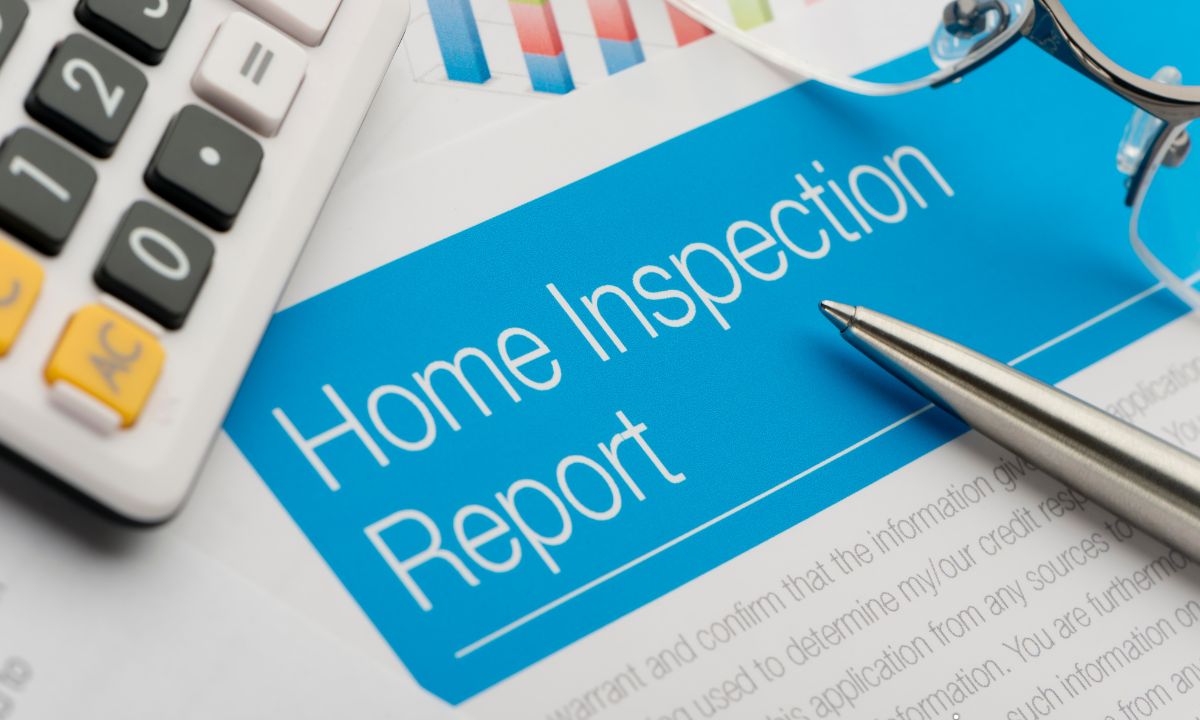 So, you’ve found your dream home, made an offer, and had the home inspection done. But wait—what happens next? For many homebuyers, negotiating repairs after a home inspection can be a daunting task. However, with the right approach and some negotiation skills, you can ensure that your new home is in tip-top shape without breaking the bank.
So, you’ve found your dream home, made an offer, and had the home inspection done. But wait—what happens next? For many homebuyers, negotiating repairs after a home inspection can be a daunting task. However, with the right approach and some negotiation skills, you can ensure that your new home is in tip-top shape without breaking the bank.
1. Understand the Inspection Report
The first step in negotiating repairs is to thoroughly review the inspection report. Take note of any major issues that could affect the safety or structural integrity of the home. These are the items that should be your top priority during negotiations.
2. Prioritize Your Requests
Not every item in the inspection report warrants negotiation. Focus on the repairs that are essential for the functionality and safety of the home. Structural issues, electrical problems, plumbing leaks, and issues with the roof should be at the top of your list.
3. Consult Your Realtor
Your real estate agent is your partner in the negotiation process. They can provide valuable insight into which repairs are reasonable to request and how to approach negotiations with the seller. Lean on their expertise to guide you through the process.
4. Be Reasonable
While it’s important to advocate for necessary repairs, it’s also crucial to be realistic in your expectations. Remember that no home is perfect, and some wear and tear are to be expected, especially in older homes. Focus on addressing the most critical issues rather than nitpicking every minor flaw.
5. Get Quotes
Before entering into negotiations, obtain quotes from licensed contractors for the repairs you’re requesting. Having concrete estimates will give you leverage during negotiations and help ensure that the requested repairs are fairly priced.
6. Be Open to Compromise
Negotiations are a give-and-take process. Be prepared to compromise with the seller, especially if they are willing to address some of your concerns but not all of them. Consider alternative solutions or concessions that could satisfy both parties.
7. Put It in Writing
Once you’ve reached an agreement with the seller regarding repairs, make sure to document the details in writing. A formal addendum to the purchase agreement outlining the agreed-upon repairs and timelines will help prevent misunderstandings down the road.
8. Consider Credits
In some cases, the seller may offer credit towards closing costs instead of making repairs themselves. Evaluate whether this option makes sense for you financially and factor it into your negotiations if it aligns with your preferences.
9. Stay Focused on the Big Picture
While negotiating repairs can be stressful, it’s important to keep the big picture in mind. Ultimately, the goal is to ensure that the home is safe, functional and meets your needs. Don’t let minor issues derail the entire process.
10. Know When to Walk Away
If the seller is unwilling to address significant issues uncovered during the inspection, you may need to reconsider whether this is the right home for you. Don’t be afraid to walk away from the deal if you feel that the seller is unwilling to negotiate in good faith.
Navigating negotiations after a home inspection requires patience, clear communication, and a willingness to compromise. By following these tips and staying focused on your priorities, you can successfully navigate the negotiation process and move one step closer to making your dream home a reality.
 So, you’ve decided to take the plunge into homeownership – congratulations! One of the most critical aspects of buying a home is figuring out your down payment. It’s a significant financial commitment that can shape your home-buying journey. But fear not! There are various down payment options available to suit different financial situations and goals. Let’s explore them together.
So, you’ve decided to take the plunge into homeownership – congratulations! One of the most critical aspects of buying a home is figuring out your down payment. It’s a significant financial commitment that can shape your home-buying journey. But fear not! There are various down payment options available to suit different financial situations and goals. Let’s explore them together. When you’re in the market for a new home, you’re not just buying a piece of property. You’re investing in a community, its amenities, and its future. One of the most significant factors influencing property values is the quality of nearby schools. Whether you have school-aged children or not, the impact of schools on property values is undeniable. Let’s delve into how schools influence property values and what it means for prospective homebuyers.
When you’re in the market for a new home, you’re not just buying a piece of property. You’re investing in a community, its amenities, and its future. One of the most significant factors influencing property values is the quality of nearby schools. Whether you have school-aged children or not, the impact of schools on property values is undeniable. Let’s delve into how schools influence property values and what it means for prospective homebuyers. Foreclosed properties can be diamonds in the rough for savvy homebuyers and investors alike. These distressed properties often come at discounted prices, presenting an opportunity to snag a great deal. However, navigating the process of buying a foreclosed property can be tricky and requires careful consideration. To help you make the most of this opportunity, here are some insider tips to keep in mind:
Foreclosed properties can be diamonds in the rough for savvy homebuyers and investors alike. These distressed properties often come at discounted prices, presenting an opportunity to snag a great deal. However, navigating the process of buying a foreclosed property can be tricky and requires careful consideration. To help you make the most of this opportunity, here are some insider tips to keep in mind: While watching shows like Property Brothers, Flip or Flop, Fixer to Fabulous, Fix My Flip and Fixer Upper may paint a rosy picture of buying a remodeled home, the reality often differs significantly. While these shows depict smooth transformations and stunning results, real-life experiences with remodeled homes can be far more complex and challenging.
While watching shows like Property Brothers, Flip or Flop, Fixer to Fabulous, Fix My Flip and Fixer Upper may paint a rosy picture of buying a remodeled home, the reality often differs significantly. While these shows depict smooth transformations and stunning results, real-life experiences with remodeled homes can be far more complex and challenging. As a seasoned real estate agent, I’ve journeyed alongside numerous families as they embark on the adventure of finding their dream homes. However, beyond the excitement of securing that perfect abode lies a crucial step often overlooked: home insurance.
As a seasoned real estate agent, I’ve journeyed alongside numerous families as they embark on the adventure of finding their dream homes. However, beyond the excitement of securing that perfect abode lies a crucial step often overlooked: home insurance. In the realm of real estate, the dream of homeownership often feels like a distant horizon for many individuals and families. Skyrocketing property prices, coupled with stagnant wages, have created significant barriers to entry into the housing market. However, amidst these challenges, there is a glimmer of hope in the form of affordable housing initiatives. These strategies aim to break down the financial barriers and make homeownership accessible to a wider range of people. In this blog post, we’ll explore some innovative approaches that are reshaping the landscape of affordable housing.
In the realm of real estate, the dream of homeownership often feels like a distant horizon for many individuals and families. Skyrocketing property prices, coupled with stagnant wages, have created significant barriers to entry into the housing market. However, amidst these challenges, there is a glimmer of hope in the form of affordable housing initiatives. These strategies aim to break down the financial barriers and make homeownership accessible to a wider range of people. In this blog post, we’ll explore some innovative approaches that are reshaping the landscape of affordable housing. As with most everything, timing is often key to unlocking substantial savings, especially when it comes to refinancing your loans. Whether you’re eyeing a lower interest rate, aiming to shorten your loan term, or simply seeking to tap into equity, strategic timing can significantly impact your financial outcomes. It is vital for a loan originator to empower the borrower with the knowledge of when to refinance.
As with most everything, timing is often key to unlocking substantial savings, especially when it comes to refinancing your loans. Whether you’re eyeing a lower interest rate, aiming to shorten your loan term, or simply seeking to tap into equity, strategic timing can significantly impact your financial outcomes. It is vital for a loan originator to empower the borrower with the knowledge of when to refinance. If you’re like many of us, your furry friends aren’t just pets; they’re beloved members of the family. As you embark on the journey of finding your dream home, it’s essential to consider their needs alongside yours. From spacious yards to pet-friendly communities, here’s a guide to finding the perfect home for both you and your four-legged companion.
If you’re like many of us, your furry friends aren’t just pets; they’re beloved members of the family. As you embark on the journey of finding your dream home, it’s essential to consider their needs alongside yours. From spacious yards to pet-friendly communities, here’s a guide to finding the perfect home for both you and your four-legged companion. Undertaking home renovations can be an exciting endeavor, whether you’re looking to enhance your living space, increase property value, or simply modernize your home. However, financing these projects can often pose a significant challenge. While personal loans and refinancing are popular options for funding renovations, it’s important to weigh the advantages and disadvantages before deciding.
Undertaking home renovations can be an exciting endeavor, whether you’re looking to enhance your living space, increase property value, or simply modernize your home. However, financing these projects can often pose a significant challenge. While personal loans and refinancing are popular options for funding renovations, it’s important to weigh the advantages and disadvantages before deciding.